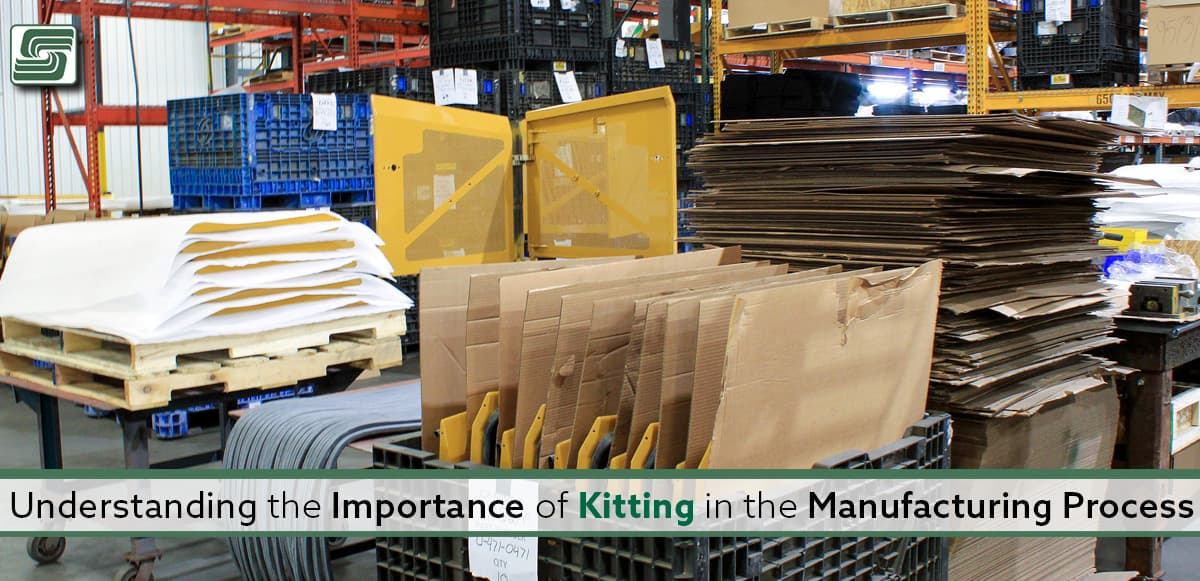
Manufacturing processes are often highly complex, comprising various stages, from planning to final production. We know each of these individual processes as a “step” in the manufacturing process; however, each step has its own sub-steps and individual responsibilities.
Working in the shop involves much more than just putting together pieces or boxes and shipping them off. There’s a lot more that goes into the process than many people realize. That is because factories have their own terminology for things most people would refer to as simply another department of the same company. Kitting is one term that may not be as well-known outside of manufacturers but plays an important role in production.
So what exactly is kitting? Let’s look at what it means and its role in manufacturing processes.
What is Kitting in Manufacturing?
Kitting involves assembling multiple products into one sealed package, ready to be shipped out as a single unit; especially useful where certain items require large quantities, but the demand for them is very low. A kitting operation combines those items with others more commonly demanded to make shipping and stocking easier for the company.
A kitting operation can be as simple as putting a few products in a clear bag or as complex as adding an internal structure to keep everything organized and easy to access. Kitting operations include products made in different places and at different times, which is a great way to help a company be more efficient.
When Did Kitting Begin?
Kitting operations go back to the 1950s when the manufacturing sector was still in its infancy. Although the concept behind kitting was around long before fully mechanized assembly lines and the manufacturing sector as we know it today came into existence, it was in the 1950s that the first real kitting operations took shape.
Kitting operations are integral to modern manufacturing, helping keep inventory low and production high. With kitting operations, companies avoid over-producing, which is costly and inefficient, and keep items on the shelves for longer.
Why is Kitting Important?
As previously mentioned, keeping inventory low is one of the most important aspects of a kit, meaning items will be in less demand. However, the company can still meet its customers’ needs. It also ensures that when a customer needs a high quantity for their product, there is a good inventory on hand of the components needed, helping prevent shortages, which are also costly and have a negative effect on a company’s brand.
Another important aspect of kitting is it allows manufacturers to use their resources better, which seems counterintuitive given that they’re combining products they’re shipping out. However, combining related items reduces their shipping costs because they use fewer materials to send out their products.
The Importance of Inventory in Manufacturing
Inventory plays an important role in any business. For manufacturers, it’s the difference between success and failure. When you have an overstock of products, you have more on hand than you could ever sell, resulting in a loss for the company if it decides to sell off that inventory at a discounted rate or just throw it out.
We divide inventory into two categories: raw materials and finished goods. The materials you use to create your products are essential to maintaining production because you need a certain amount of each material to create the goods your customers want to purchase (raw materials). The finished goods inventory is slightly different, referring to products you have already created but have not yet shipped out to customers.
While some businesses try to keep a healthy amount of finished goods on hand, others try to keep as little on hand as possible.
The Importance of Quality Control
Quality control is an important part of manufacturing processes regardless of the type of goods a company produces. However, it’s important when shipping goods to other countries, where they may have certain standards.
Whether it is clothing or cars, quality control involves inspecting each item, ensuring it meets certain standards, anything from the color to the stitching on a piece of clothing to the noise level of a car engine. Customers return the product to the manufacturer for further work if it doesn’t meet the necessary standards, helping to ensure that the product you are receiving is exactly what you asked for. It also helps to prevent customers from receiving defective goods that either don’t work or prematurely fail.
The Importance of Equipping Employees with Kits
Kitting operations help streamline the production process, especially for small businesses or manufacturers with limited resources and staff. Employees must have everything they need at their fingertips when producing goods, including the materials they need to do their job and any required tools.
Kitting operations help organize everything an employee may need to complete their job, including tools, materials, and instructions. Sometimes, kitting operations even include items employees produce, particularly common in the automotive industry when sending packaged parts to specific destinations, helping make the process more efficient and cutting down on shipping time.
In Sum
Kitting operations are an important part of any manufacturing process, allowing companies to keep their inventory low and use their resources efficiently. Kitting components with other related items ensure it travels as efficiently as possible, which means sending one package instead of many smaller ones.
Kitting operations help streamline the entire production process and make it more efficient.